- miracles don’t happen
- Gospels are unreliable
- only a metaphor or symbol
- we can’t verify
- myths & legends developed through time
- can’t know what happened
- Apollonius of Tyana was similar
- other accounts have miracles too
- exaggeration
- late accounts
- assimilation of Greek heroes to elevate Jesus’ public image
- same with other historians
- reported by eyewitness
- multiple attestations
- enemy attestation
- embarrassing material
- modest descriptions
- dissimilarity
- importance in the narrative
- the high number of occurring cases
- replication in modern time
Reality or fiction?
Worldview
Since it’s impossible to prove them empirically, historians only go with probabilities, not 100% certainty4.
The historicity of miracles
Skeptics can easily dismiss the Gospels as non-historical because of the supernatural, but other trustworthy historians of the same time period also include ‘alleged’ supernatural events5:
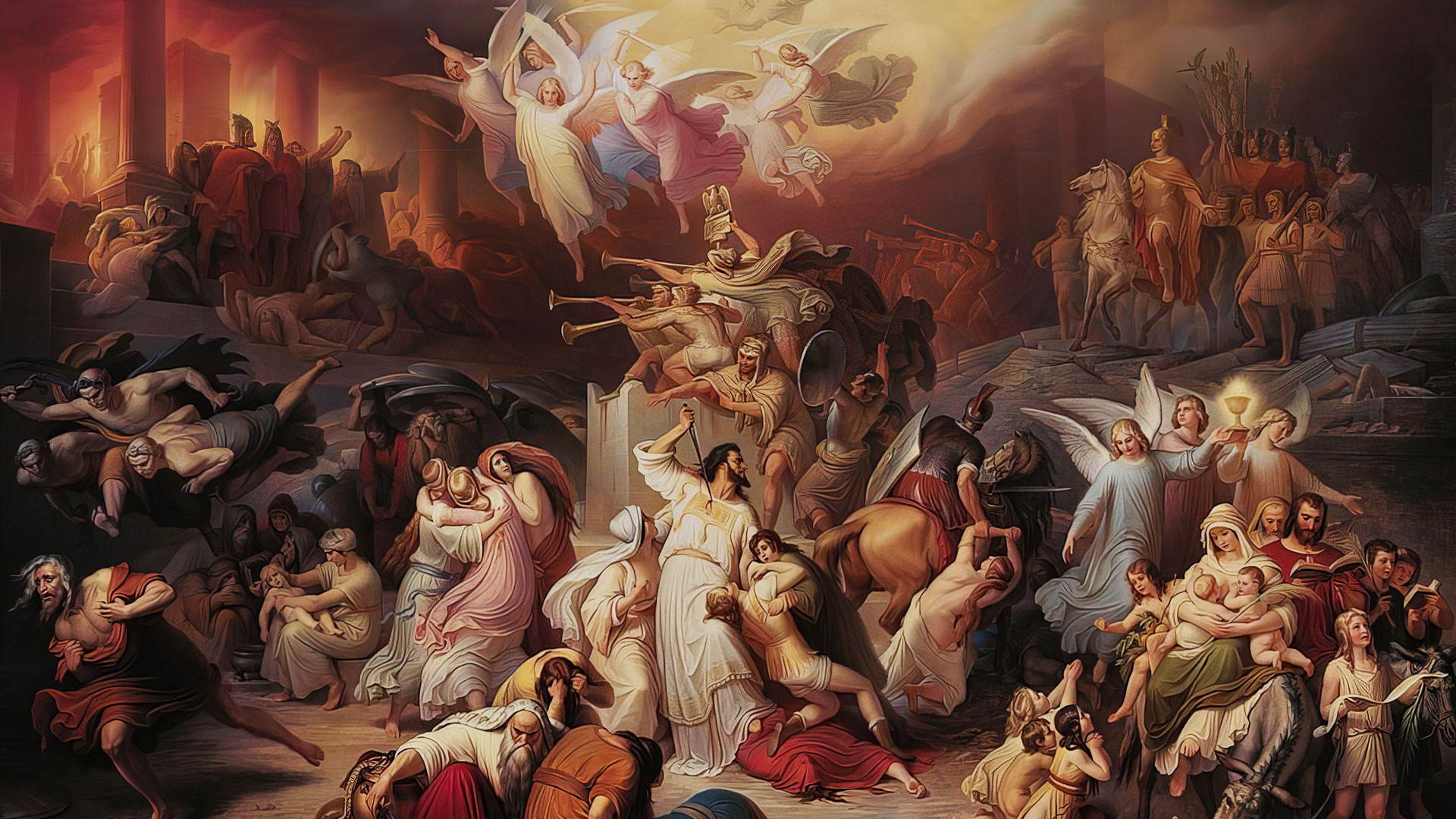
- Josephus
(Antiquity of the Jews 8.46-48, 325-327) - Tacitus
(Histories, 4.81-82) - Suetonius
(Vespasian, Lives of the Caesars 7.2-3) - Herodotus
(Histories) - Plutarch
(Pyrrhus, Lives 3.4) - Livy
(History of Rome 21-45)
- Dio Cassius
(Roman History 65.8) - Philo
(The Embassy, To Gaius 144-145) - Philostratus
(Life of Apollonius) - Porphyry
(Life of Pythagoras 29, 33) - Diogenes Laertius
(Empodecles, Live of Eminent Philosophers 8.60-62, 69)
Josephus & Tacitus are similar to Mark’s Gospel: 25 to 35 years span between the events and the texts’ writing. And it was reported by eyewitnesses6. One of the them is the strange events in the sky during the Destruction of the Temple of Jerusalem in 70 CE7, predicted by Jesus (Mt 24:2, Mk 13:2, Lk 21:6).

Skepticism
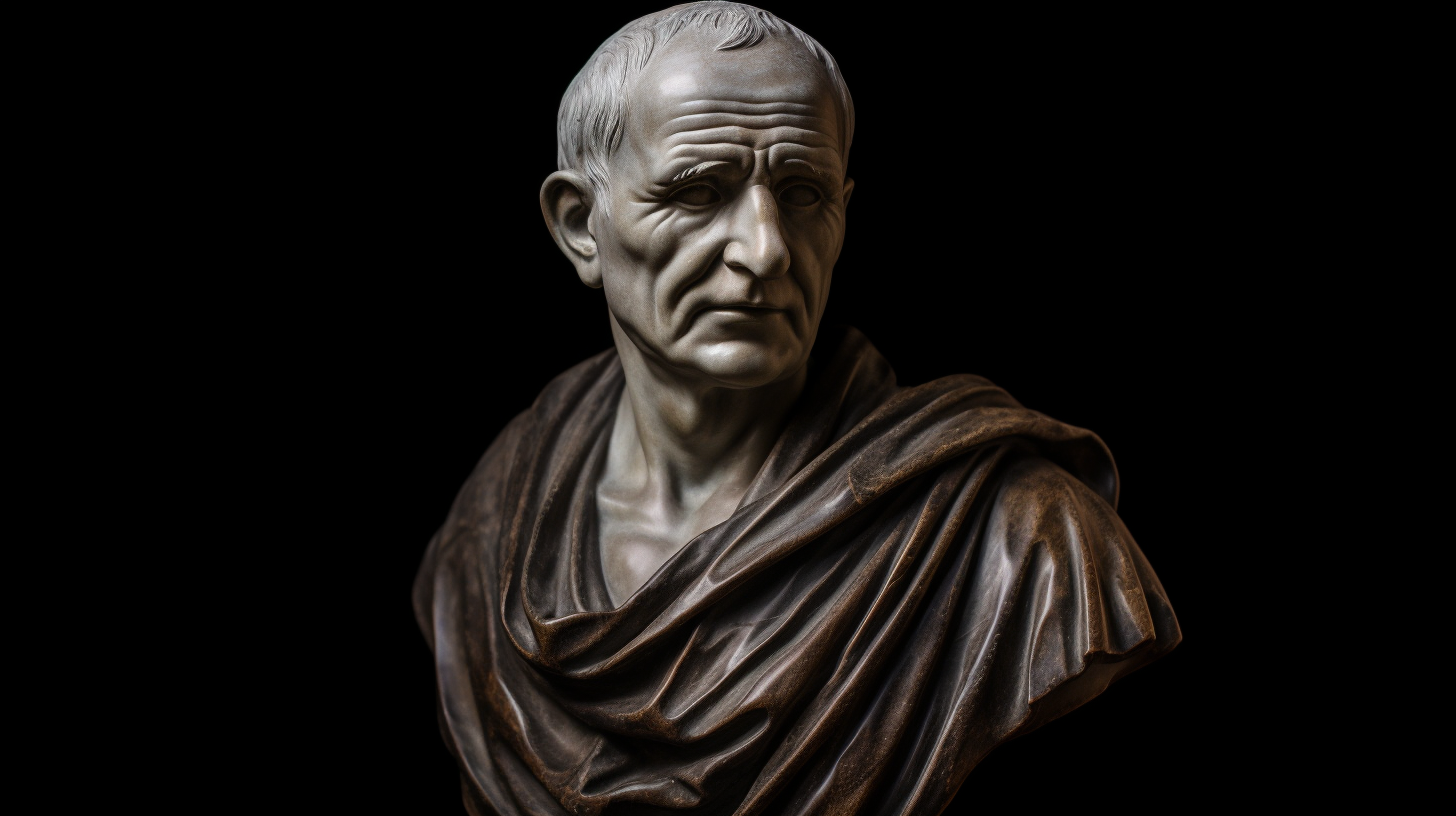
Miracles typically don’t leave hard evidence behind, that is why it is mostly based on eyewitness testimonies. Not everyone was naive in antiquity13: both the Greco-Roman people and faithful Jews could be easily skeptical of supernatural events.
Greco-Romans
Ovid, Hermippus, Philostratus, Polybius, Herodotus, Livy, Diodorus Siculus, Plutarch
Jews
- Sadducees didn’t believe in the resurrection, spirits, and angels
(Mk 12:18, Acts 23:8) - Joseph and Zechariah (Jewish priest) didn’t recognize the miraculous pregnancy of their respective wives
(Mt 1:19, Lk 1:18) - The disciples doubt Jesus’ resurrection
(Mt 28:17, Lk 24:11, 24:37, Jn 20:24-29) - Paul said that the resurrection happened or not at all
(1 Cor 15:14) - Jews saw miracles but still didn’t believed
(Jn 12:37) - Jews wanted proof that a naturally blind man could gain his sight by miracle
(Jn 9:18-23) - In Mark, the disciples were slow to recognize Jesus’ divinity through his miracles until halfway of the Gospel18
Historicity of Jesus’ miracles
Greco-Roman divine men
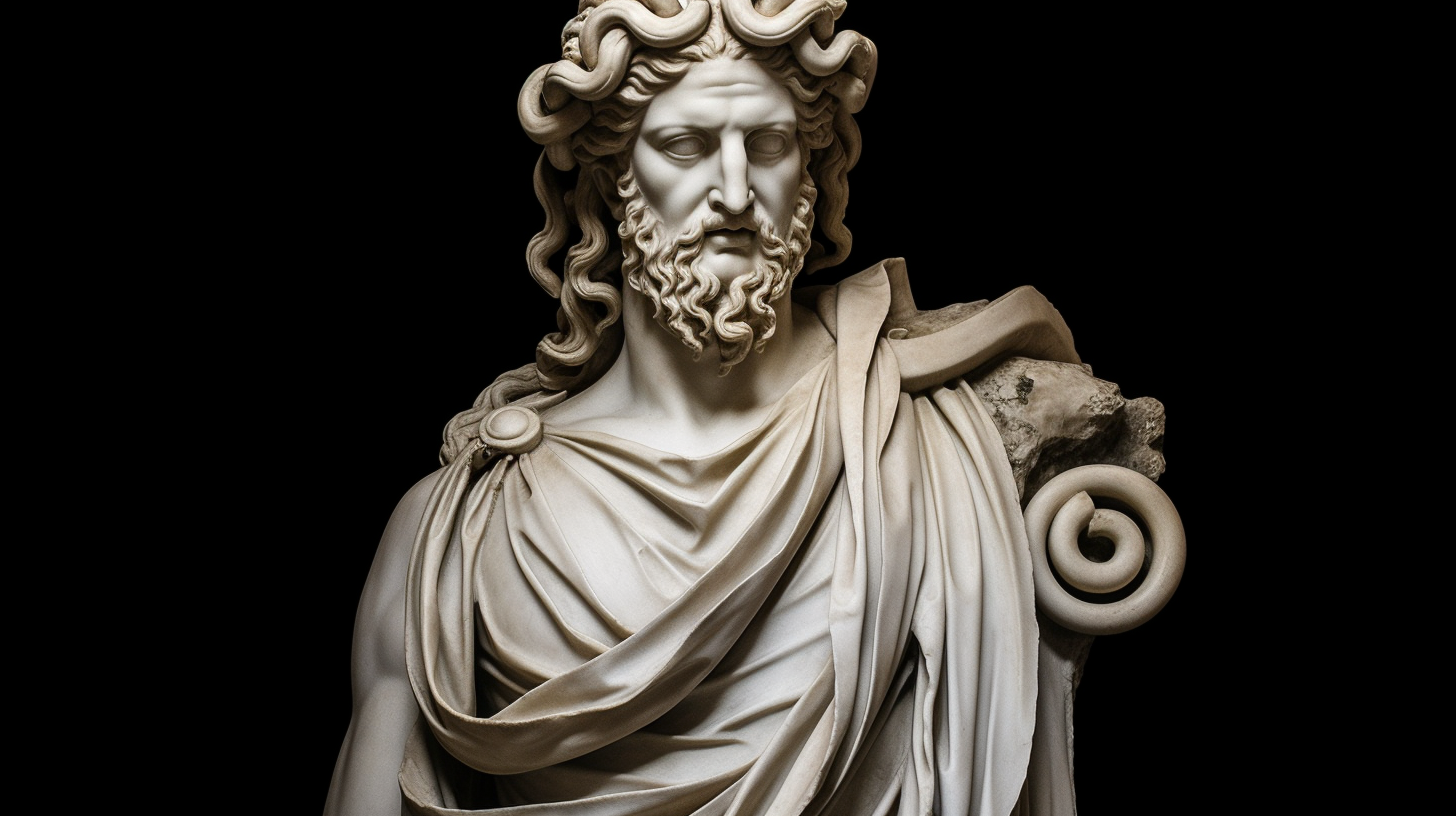
Did Jesus had competitions?
Particularly for Apollonius: we only possess one source, written 130 years after his death. Moreover, Philostratus (author) wrote in the 3rd century CE in Cappadocia (Turkey), where an empress Julia Domna commissioned him to write an account, in order to build a temple for Apollonius21. Perhaps to compete with Christianity22, like many religions starting from the 2nd century CE and above23.
Mythology
Myths typically start with an ordinary man, and people add more and more details to their story to make it more legendary. With Jesus, it’s quite the opposite: in chronological order, Mark is the 1st Gospel and 40% of its content is just miracles27, and when we arrive to John (last Gospel), we only have 7 of them. If the stories evolved into myths, we would expect the opposite to happen (people gradually add more and more miracles with time to make it more legendary, not less).
Why is that?
Due to limited space to write on a scroll, Matthew abbreviated Mark by reducing the number of miracles (taken as granted by the early Church)28.
Apocalypsticism

The “historical” Jesus was certainly a Jewish apocalypticist who predicted the end of the world and the coming of a new Kingdom29. Since He was influenced by John the Baptist30, and the early Church strongly believed that He would return during their lifetime31, it make sense that in between, Jesus taught about the same subject.
Salvation entirely depends on Jesus’ bodily resurrection34.
Without the miracles, there would be no Kingdom of God to talk about.
His miracles of healing & exorcism were directly attached to his preaching of the Kingdom of God353637 (Mt 12:28, Lk 11:20), so it’s not influenced by Greek mythology. At the time of Jesus, two kingdoms were at war: the kingdom of God (Lk 22:31, 1 Thess 2:18, 2 Thess 2:9, Rev 2:9-13; 3:9) & the kingdom of Satan (Mt 12:26, Mk 3:23). What does that mean? It’s quite simple: in Heaven, there will be no more evil or suffering (Rev 21:4). By healing and driving demons away, Jesus gives a foretaste of what it looks like up there38. Since they parallel the actions of God in the Old Testament, Jesus’ miracles prove to others that He was God (CCC 515). And at the same time, it increase people’s faith39 by attract them to Him.
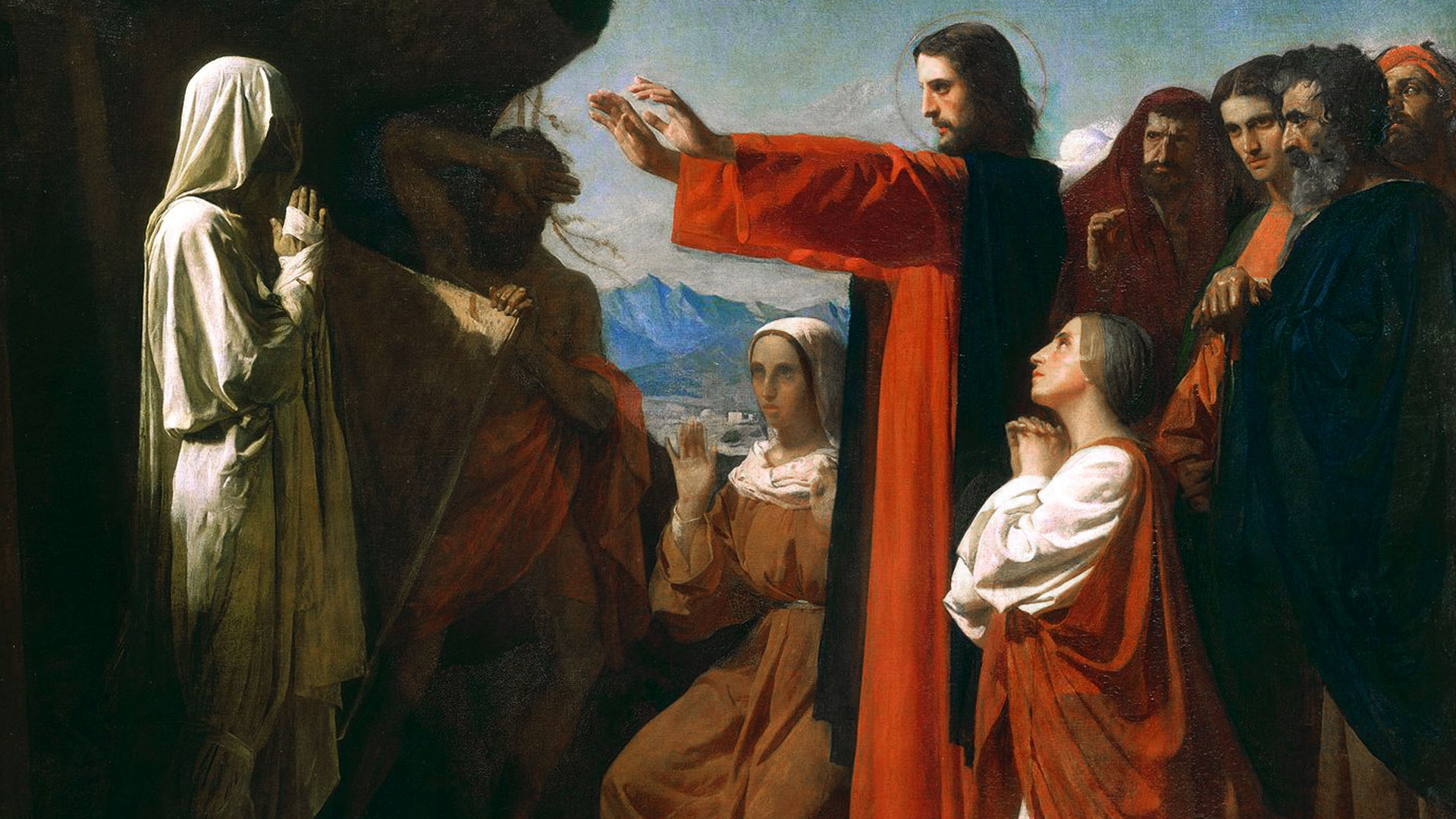
Sources
Pre-Gospel traditions
While magic is usually performed in secret, the 40+ miracles of Jesus has been saw in public by eyewitnesses, which explain why it has been reported in early multiple independent sources.
From the time of Jesus to the Gospels, all the five major sources (units) behind the Gospels unanimously included miracles attributed to Jesus42.
Earliest traditions
Out of the 250 literary units that exists in the Synoptics, 1/5 speaks of the healing & exorcism of Jesus52.

Mark, Luke, and Paul weren’t direct followers of Jesus: their records aren’t products of their own imagination, but reports coming from earlier oral traditions, which has been seen by numerous eyewitnesses (Acts 10:38-39).
Even if Paul don’t say anything about Jesus performing miracles, we have at least three independent sources that circulated from the Palestinian Church in the 30s CE.
As atheist NT scholar Maurice Casey said: Mark’s Gospel is partly dependent on eyewitness accounts by Aramaic-speaking disciples53.
Semitism
Mark has two verses in Aramaic (Mk 5:41, Mk 7:34) – “Talitha koum” & “Ephphata”, originated from the Palestine church (30s CE)57. Possibly the miracle of the Pool of Siloam too (Jn 9:7).
Rudolph Bultmann (liberal NT scholar) even attributes three miracles to Palestinian traditions (stilling of the storm, feeding stories and cleansing of the leper)60.
Other early sources
Acts of the Apostles
20% of Acts is filled with miracles (mostly under Jesus’ name63). Luke was present when some of them happened (Acts 20:9-12; 28:8-9).
Hebrews
Hebrews 2:4 independently attested that Jesus performed miracles.
Thus, within 40 years after the death of Jesus, all his miracles have already been recorded on paper by multiple independent sources. For Muhammad, the first ones only start to appear 75 years after his death (many Islamic scholars regarded those sources as untrustworthy64). For Apollonius of Tyana, it’s 130 years later.
Quadratus (70-130 CE) wrote that the people who got healed or raised from the dead by Jesus were still alive until the end of the 1st century65.
In the 1st century CE, there is no source who ever denying that Jesus was a miracle-worker. In fact, even enemies of Christianity agree on the same thing (they simply disagree on the source of that power).
Archeology
Non-Christian sources
Jewish and pagan exorcists or magicians rely on incantations, magical papyri, or other things to drive out demons, evil spirits, and diseases of all kind73. Jesus’ reputation as a healer & exorcist was well-spread in the 1st century CE.
Craig A. Evans sums up a few archeological findings74:
- Magician cup
- Jewish magic bowls
- Amulets
- Abgar-Christ correspondence
(ambiguous)
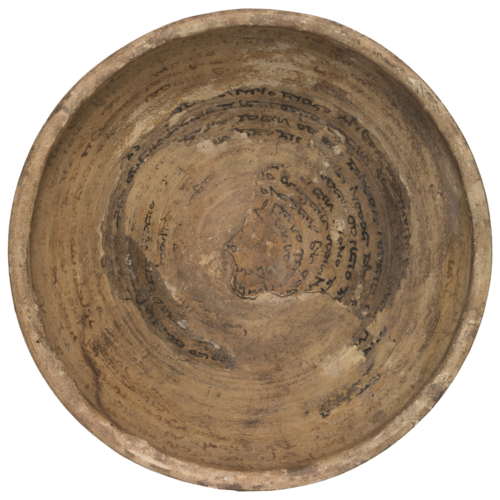
Incantation bowl
Ancient incantation bowls contain a prayer to seal the evil spirits in them. Franck Goddio (Oxford Centre of Maritime Archeology) found a cup underwater near Alexandria, Egypt75.
‘The magician through Christ’
The bowl dates between late 2nd century BCE and early 1st century CE, but the engraved inscription is from the 1st century CE76.
Egyptian papyri
The Greek magical papyri PGM IV.3007–3086 (lines 19–20) reads:
‘I adjure you by the god of the Hebrews, Jesus’
It has the names of many deities from different cultures & religions for the sake of increasing the chances that any of them would work out to expel evil spirits77.
It’s from the 1st century CE, sometime that pre-date 70 CE.
Christian sources
Amulets
Even if amulets where forbidden to be used by Church authorities, many of them existed to heal from sickness and diseases78.
Abgar-Christ correspondence
This ancient apocryphal letter was a forgery. But it is still interesting that people really acknowledge Jesus as a miracle-worker.
Eyewitness
If these miraculous stories are true, why don’t we have more people writing about them? The two biggest problems are that it was an oral culture, and the vast majority of ancient texts didn’t survive until today.
According to Peter Williamson (biblical scholar), there were only eight published authors from the 1st century CE in the region of Palestine at that time. Six of the eight are Christians (Matthew, Mark, John, James, Jude & Peter). The two others are Josephus & Justus of Tiberias (his works have been lost)79. Josephus was born in 37 CE, five years after Jesus’ death, so he couldn’t be an eyewitness. What we have left are only Christian sources.
Jesus didn’t go outside of Palestine during his ministry, so, normally, the only people who could witness his miracles only came around that region.
As Craig Blomberg stated, if we miss more non-Christian sources, it’s probably because they already converted to Christianity, given the miracles80. Two examples would be Paul & James (they could have been two Jewish sources).
As Marcus Borg (Jesus Seminar) said, it is virtually indisputable that Jesus was a healer and exorcist81.
History (growth of the Church)
Chain of custody
Between the time of Jesus (30s C.E.) and the Gospels (66-90s C.E.), the disciples were able to perform miracles in Jesus’ name82, under the Holy Spirit. They couldn’t have made up the whole story.
The first Christians believed that they were living in the end time, after witnessing Jesus risen from the dead83. Convincing Jews & Greeks about a crucified Messiah was counter-productive (1 Cor 1:23), so the Apostles would have the need to perform miracles in Jesus’ name to help their case. That is why they were waiting for the Holy Spirit to come as Jesus said.

The population of Christians increase around 40% more every decade84:
- 1,000 by 40 C.E.
- 7,434 by 100 C.E.
- 210,516 by 200 C.E.
- 5,961,290 by 300 C.E.
- 31,722,489 by 350 C.E.
(52,9% of the Roman empire)
In a pagan world filled with magic and occult, Christianity was able to get people’s attention by pointing them back to the Savior.
Paul, Peter and other disciples (33-67 CE) did miracles, healing, exorcism, resuscitation & speaking in tongue85, mostly to gain new converts. There is Semitism in Acts 9:36 when Peter restore Tabitha’s life.
Church Fathers
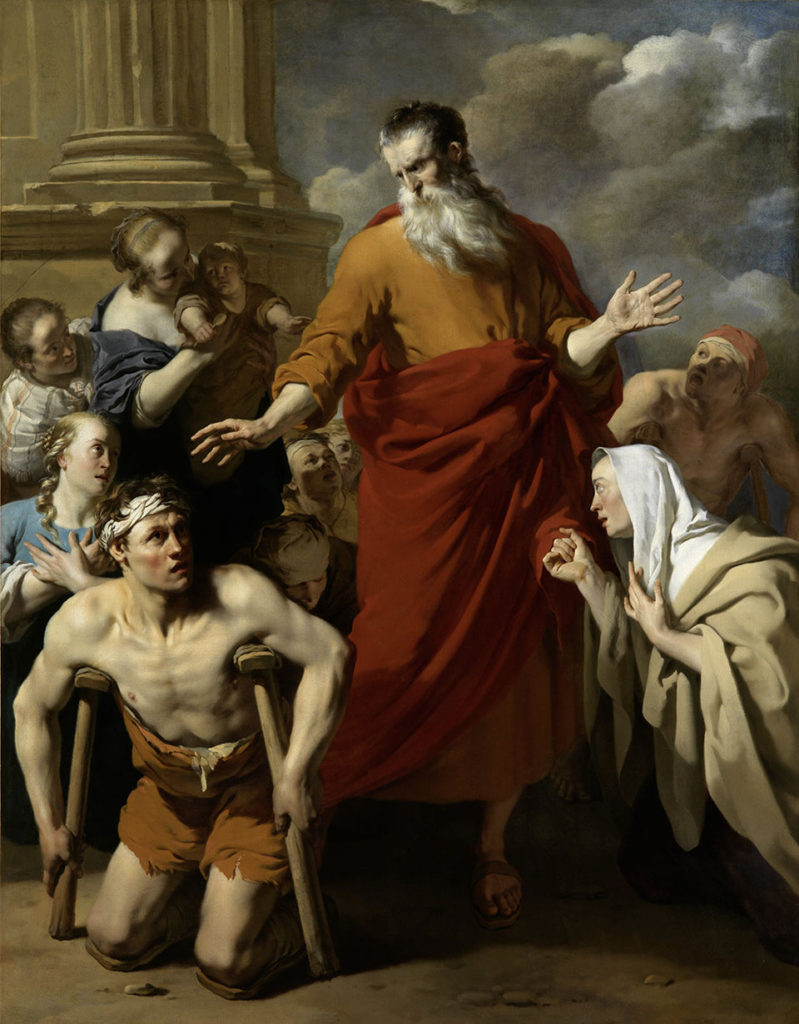
- Justin Martyr
(100-165 CE): Christians healed and drive out demons in Jesus’ name88 - Irenaeus
(130-202: list out miracles that converted pagans, used miracles to apologetically defend orthodoxy89CE) - Tertullian
(155-220: pagans cured by exorcism and thankful for Christians90CE) - Cyprian of Carthage
(200-258: some Christians were cured by baptism91CE) - Origen
(248: he witness Christians expelling evil spirits and performing cures92CE) - Athanasius
(296-373: invited skeptics to witness exorcisms93CE)
Miracles in today’s world
The nature miracles of Jesus (e.g. walking on water) are difficult to evaluate if they were truly historical or strictly metaphorical to assert a point. As for his healing & exorcisms, it’s still present today.
I must warn that not all miracles claim today are genuine despite the millions of claims. And not every miracle we wish to happen work out all the time. Only God decides when it happens.
Modern believers who are eyewitnesses do report events the same way as it was written in Mark’s Gospel96.
Healing

Craig Keener list a few sample of conversions fueled by the healing prayers97:
- 90% of the growth of the church in China
- most converts among the Kankanaey in northern Philippines
- a Baptist church in India grew from 6 members to 600 in 1 year
- 80% of convert in a Lutheran church in Ethiopia
- 86% of Brazilian Pentecostals had an experience
- in Argentina, healing is the primary tool of evangelization
What happen today happened the same way back then 2000 years ago.
Exorcism

Fr. Gabriele Amorth (former chief exorcist of the Vatican) lists 4 types of demonic events98:
- possession
- vexation
- obsession
- infestation
As he stated, we should always seek for natural explanations first by consulting a medical/psychological expert99. When it goes beyond the limits of science, we can proceed to the next step where unusual things happen:
- vomiting of nails, glass or other objects
- herculean strength
- levitation
- disturbances on houses, objects and animals
- strange reactions in the presence of the sacred objects
- speaking in tongues + overturning of the eyes
Since the devil doesn’t want to manifest itself too often (people would all be at church if that happen), he prefers to stay relatively quiet so people don’t believe in its existence. That’s why the cases of possession are extremely rare. 90% of the case are curses & spells afflicted by another person.
Outside of those two, we also have other miracles in the Catholic Church100: Eucharistic bleeding, incorruptible Saints, Marian apparitions, St. Michael apparitions, stigmata, levitation, crying statues, biblical prophecies, near-death experiences, and Saints intercessions.
Criteria of embarassement
Polybius complained about historians who put too much emphasis on prodigies (τερατεία)101.
Apocryphals
Compared to the Arabic Infancy Gospel (6th century CE) & Infancy Gospel of Thomas (2nd century CE), the miracles from the four canonical Gospels are described in a more sober way102:
- miracles won’t convince everyone
(Lk 16:31) - not always successful
(Mk 5:8, 9:18-28) - Jesus ask people to keep quiet
(Mk 1:44) - Jesus refused to demonstrate his power to Herod
(Lk 23:8-12), Pharisee(Mk 8:11-12, 12:38-42), Satan(Mt 4:5-7, Lk 4:3-4), on the cross(Mt 15:31-32), in Nazareth(Mk 6:1-6)
Exorcism against Beelzebub
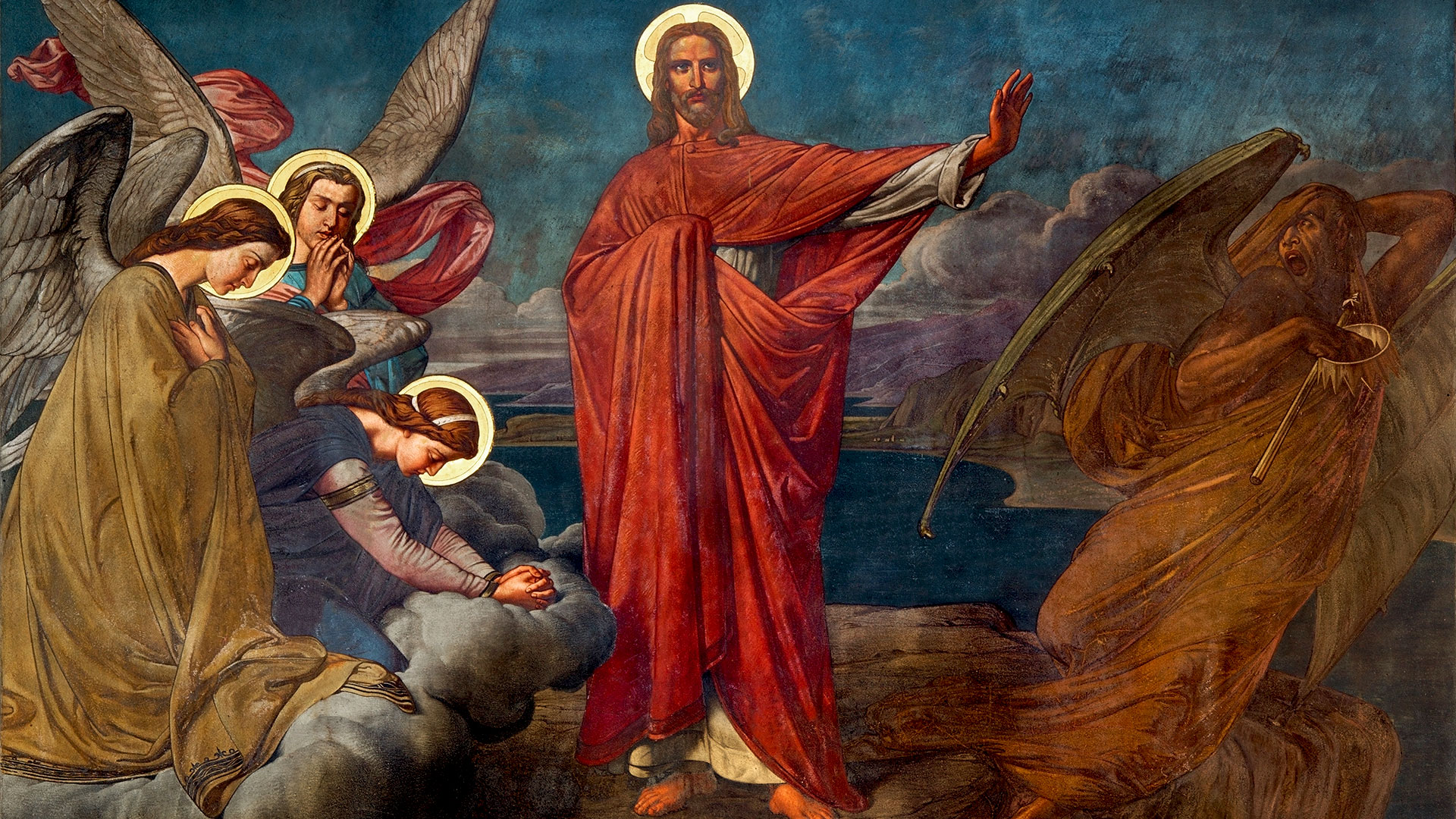
The Jews know who Beelzebub is: a Philistine deity (2 Kings 1:2-16), but not the Greeks. Since Mark & Luke wrote for a Gentile audience, why would they named an unknown demon to the Greeks?106 Plus, why would the Gospel authors make Jesus to side with the devil if it’s not the case?
Moreover, that passage is very early & multiply attested (Mk 3:22-30, Mt 9:34, 10:25, 12:24, Lk 11:15), since it was preserved in the source behind Mark & Q.
Was the miracles of Jesus copied from Jewish and pagan stories?
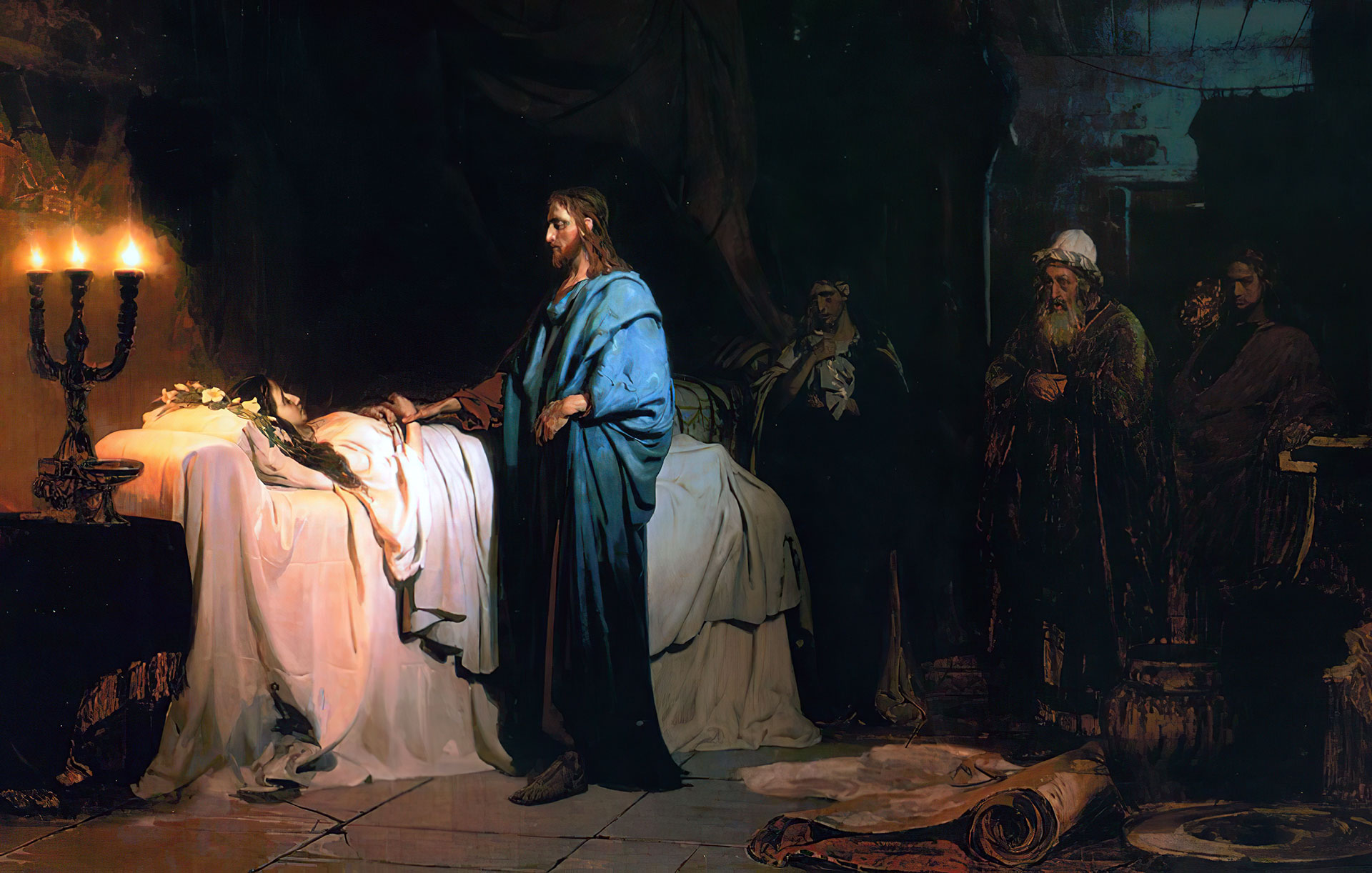
Demons knew that Jesus was God.
Jesus didn’t need any assistance. He did everything by Himself.
The Greco-Roman people asked for the intercession of their gods with magical formulas, paraphernalia, or prayers109. Today people pray to Jesus for various things.
Jewish world
God in the flesh
The miracles of Jesus are paralleled with Elijah, Elisha and Moses, but at the same time, different from them. For example, the multiplication of food is very similar (1 Kgs 17), but on the other side, Elijah calls down fire (1 Kgs 18:37-38) while Jesus refused to do so (Lk 9:54-55).
Jews believed that God is the ultimate healer112(Jn 3:2) and ask help through prayers, using His name to drive out demons.
David did exorcism to deliver … by playing music with his harp. Jesus is the New David who use His own authority to do it.
Many Jewish prophets performed miracles through the power of God.
Jesus didn’t need to pray. He was the embodiment of the God of Israel after all, He could do it by his own authority.
Just as God could spoke the universe to exist, Jesus’ words carry a lot of authority.
Greco-Roman world

Jesus is mostly compared with Apollonius (ca. 3-97 CE) & Asclepius (12th century BCE) for their healing abilities.
Apollonius of Tyana
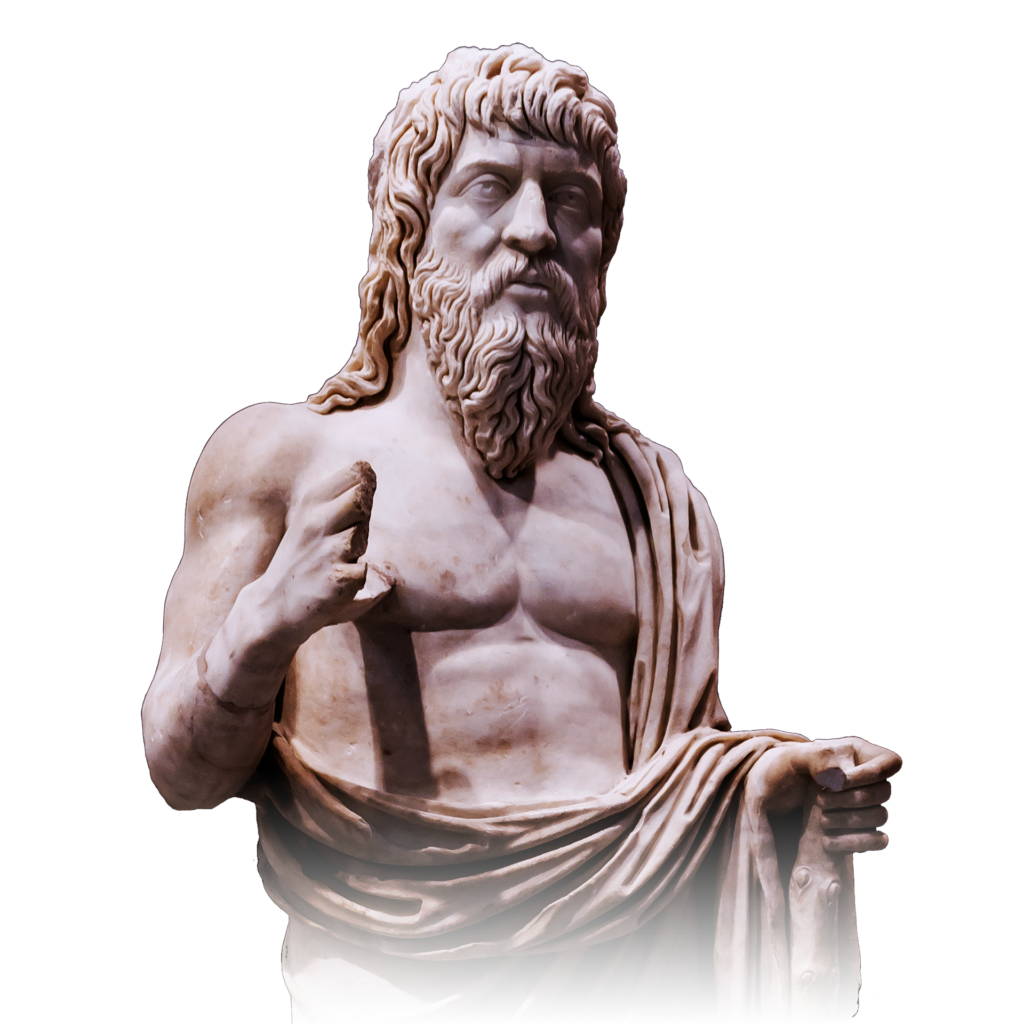
Apollonius (3-97 CE) was a Greek philosopher. He allegedly taught, gather disciples, perform miracles and/or magic, upon his death, he underwent heavenly assumption113. Similar to Jesus.
However, the biography of Apollonius is doubtful:
- we only have one source, written 130 years after his death
- Jesus has four sources, all within 60 years
- traditions about Jesus’ miracles exist in the 30s CE
- Philostratus was commissioned by an empress to build a temple to Apollonius114, so we can expect intentional embellishment to deify the man, perhaps to compete with Christianity115
- Jesus’ disciples died for what they recorded
- the primary sources of Philostratus are also not necessarily eyewitness
- divine birth & apotheosis was a common theme in Greco-Roman religion, but not in Judaism
- Philostratus wrote in the 3rd century CE in Cappadocia (Turkey), where Christianity was already present (he is more suspected of copying the story of Jesus than the opposite)
As Martin Hengel argues, many religions tried to compete with Christianity starting from the 2nd century CE and above116.
Asclepius
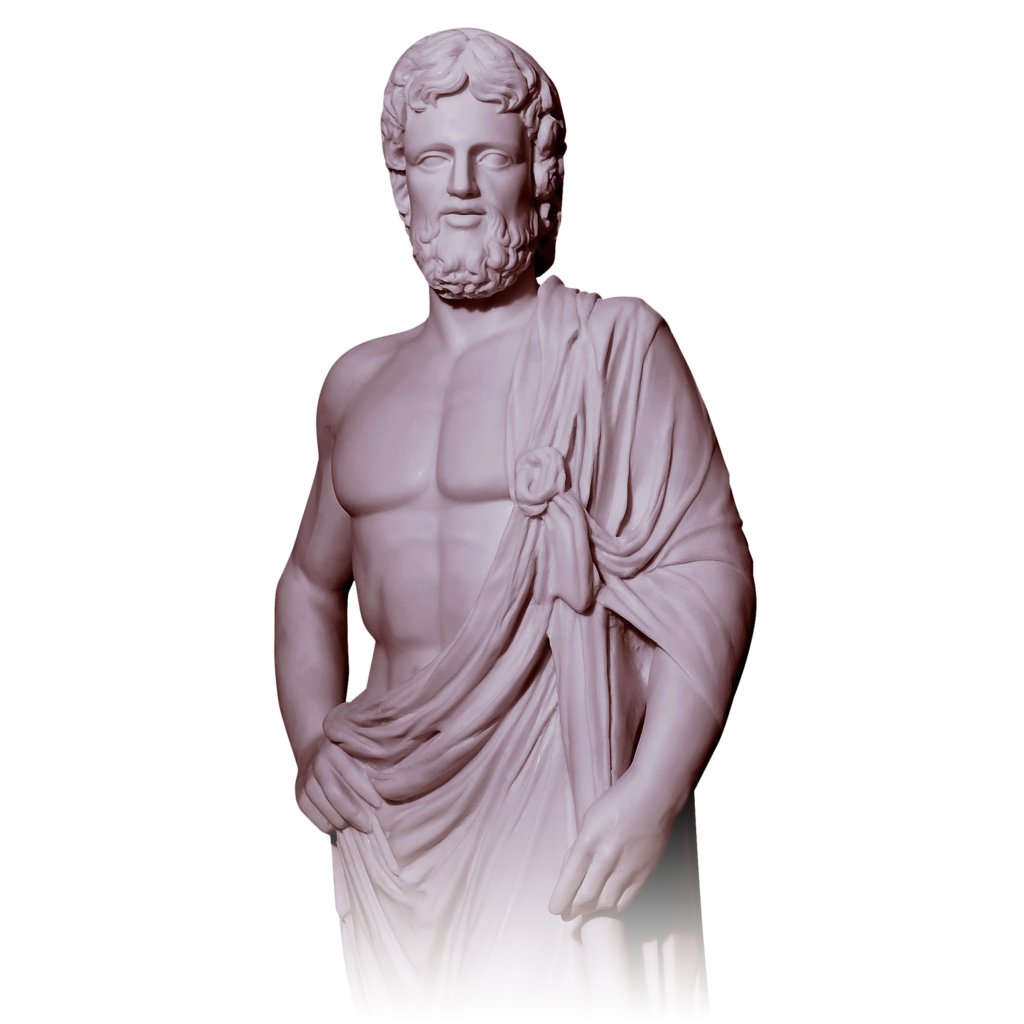
Asclepius, Serapis, Isis, Apollo were pagan deities who were attributed with healing.
According to Homer’s Iliad, Asclepius was a skilled physician living around the time of the Trojan War (his son Machaon was helping the wounded Menelaos). He could allegedly heal the sick and raise people from the dead. Zeus killed him with a thunderbolt, and was deified into a Greek god.
400 years separate the The Trojan War (12th century BCE) and the Iliad (8th century BCE).
Sick people had to do a ‘pilgrimage’ to a temple of Asclepius, spend the night dreaming about their gods, and could get cured the next morning. He had many locations in the Greco-Roman empire: Epidauros, Cos, Triccê, Pergamum, Corinth, Troezen, Athens, Ephesus, Dor, Cilicia, Crete, mostly where they is a healthy spring of water.
Both accounts are late embellishments. Instead of being a spiritual deity hearing people’s prayer in a temple, Jesus was a living traveling miracle-worker.
The difference is substantially good enough to conclude that Jesus wasn’t plagiarized from Asclepius. Moreover, Jews between the Maccabees revolt and the 70 CE era are completely intolerant toward religious syncretism.
Recommended books
- Craig Keener – “Miracles: The Credibility of the New Testament Accounts”
- Craig Evans – “Fabricating Jesus: how modern scholars distort the Gospels”
- John P. Meier – “A Marginal Jew: Rethinking the Historical Jesus, Volume II: Mentor, Message, and Miracles”
- Wendy Cotter – “Christ of the Miracle Stories, The: Portrait through Encounter“
- Fr. Gabriele Amorth – “An Exorcist Explains the Demonic: The Antics of Satan and His Army of Fallen Angels”
- Karlo Broussard (Catholic Answers) – “20 Answers: Miracles”
- John P. Meier, “A Marginal Jew: Rethinking the historical Jesus vol II: mentor, message, and miracles”, (Yale University Press, 1991), 509-521
- J. Warner Wallace, “Cold-Case Christianity: A Homicide Detective Investigates the Claims of the Gospels”, (David C Cook, 2013), 25
- See Craig Keener’s book “Miracles: the credibility of the New Testament accounts”
- Gary R. Habermas & Michael R. Licona. “The Case for the Resurrection of Jesus”, (Kregel Publications, 2004), 31
- Wendy Cotter, “Miracles in Greco-Roman Antiquity: A Sourcebook for the study of New Testament Miracle Stories”, (New York: Routledge, 1999)
- Gerd Theissen, “The Gospels in Context: Social and Political History in the Synoptic Tradition”, (Minneapolis: Fortress Press, 1991), 104
- Josephus (Jewish War, 6.3.5), Tacitus (Histories, 5.13)
- Craig S. Keener, “Miracles: the credibility of the New Testament accounts”, (Grand Rapids, MI: BakerAcademic, 2011), 37
- John P. Meier, “A Marginal Jew II: mentor, message and miracles”, (London: Yale University Press, 1994), 538
- John P. Meier, “A Marginal Jew: Rethinking the historical Jesus vol II: mentor, message, and miracles”, (Yale University Press, 1991), 548-549
- Pliny the Elder, “Natural History”, 28.4.17
- John P. Meier, “A Marginal Jew: Rethinking the historical Jesus vol II: mentor, message, and miracles”, (Yale University Press, 1991), 537
- Craig S. Keener, “Miracles: the credibility of the New Testament accounts”, (Grand Rapids, MI: BakerAcademic, 2011), 88-96
- Diogenes Laertius 8.1.41
- Natural History 28.5.29
- De Divinatione 2.28, 2.83
- Death of Peregrinus, 39-40
- John S. Kloppenborg, “Q the earliest Gospel: an introduction to the original stories and sayings of Jesus”, (Louisville, London: Westminster John Knox Press, 2008), 69
- Raymond E. Brown, “Introduction to a New Testament Christology”, (Mahwah: Paulist Press, 1994), 63
- John P. Meier, “A Marginal Jew: Rethinking the historical Jesus vol II: mentor, message, and miracles”, (Yale University Press, 1991), 587
- Lee Strobel, “The Case for Christ: a journalist personal investigation of the evidence for Jesus”, (ZONDERVAN, 1998-2016), 119
- Simon Swain, “Defending Hellenism: Philostratus, In Honour of Apollonius” in “Apologetics in the Second Century: Pagans, Jews, and Christians” ed. Mark Edwards, Martin Goodman, Simon Price, and Christopher Rowland, (Oxford University Press, 1999), 157-96
- Martin Hengel, “The Son of God: the origin of Christology and the history of Jewish Hellenistic religion” (translated by J. Bowden (Philadelphia: Fortress, 1976), 28
- Craig S. Keener, “Christobiography: Memory, History, and the Reliability of the Gospels”, (Grand Rapids, MI: Eerdmans, 2009), 332
- John P. Meier, “A Marginal Jew: Rethinking the historical Jesus vol II: mentor, message, and miracles”, (Yale University Press, 1991), 597
- Craig S. Keener, “Miracles: the credibility of the New Testament accounts”, (Baker Academic, 2011), 27
- Craig S. Keener, “Miracles: the credibility of the New Testament accounts”, (Baker Academic, 2011), 24
- Martin Hengel, “Acts and the History of the Earliest Christianity”, (Philadelphia: Fortress Press, 1985), 8
- Bart D. Ehrman, “Did Jesus Exist?: The Historical Argument for Jesus of Nazareth”, (Harper Collins, 2012), 298
- Mt 3:1-7, Mk 1:4-11, Lk 3:1-22, Acts 1:5; 1:21-22; 10:37-38; 11:16; 13:24-25; 18:25; 19:3-4, Jn 1:19-42; 3:22-36; 4:1, Josephus “Antiquities of the Jews” 15.5.2
- 1 Peter 4:7, Mt 24:34, 26:64, 1 Cor 10:11, 15:51, 1 Thess 4:15-17
- Martin Hengel, “Acts and the History of the Earliest Christianity”, (Philadelphia: Fortress Press, 1985), 8
- Craig S. Keener, “Miracles: the credibility of the New Testament accounts”, (BakerAcademic, 2011), 36
- 1 Cor 15:12-19, Rom 10:9-10
- Craig Evans, “Fabricating Jesus: how modern scholars distort the Gospels”, (IVP Books, 2006), 141
- Gerd Theissen and Annette Merz, “The historical Jesus: a comprehensive guide”, (Minneapolis: Fortress, 1998), 281
- Raymond E. Brown, “An Introduction to New Testament Christology”, (New York: Paulist Press, 1994), 63
- John P. Meier, “A Marginal Jew: Rethinking the historical Jesus vol II: mentor, message, and miracles”, (Yale University Press, 1991), 549
- John P. Meier, “A Marginal Jew: Rethinking the historical Jesus vol II: mentor, message, and miracles”, (Yale University Press, 1991), 542-543
- E.P. Sanders, “Jesus and Judaism”, (London: SCM Press, 1985), 157-173
- Jn 2:23, 6:2
- John P. Meier, “A Marginal Jew: Rethinking the Historical Jesus, Volume II: Mentor, Message, and Miracles”, (Yale University Press, 1994), 619
- John P. Meier, “A Marginal Jew: Rethinking the historical Jesus”, (Yale University Press, 1991), 620
- William Lane Craig, “The Empty Tomb of Jesus”, in Gospel Perspective II, ed. R.T. France and David Wenham (Sheffield, JSOT Press, 1981), 190-191
- Mt 14:28-31, 17:27
- Lk 5:1-11, 7:11-17, 8:2-3, 13:10-17, 14:1-6, 4:29-30
- Kim Paffenroth, “The Story of Jesus According to L” (Bloomsbury T&T Clark, 1997), 144
- Mt 8:5-13/Lk 7:1-10, Mt 11:2-6/Lk 7:18-23, Mt 9:32-34/Lk 11:14-23, Mt 12:43-45/Lk 11:24-26
- J.P. Moreland, “Scaling the Secular City: a Defense of Christianity”, (Grand Rapids: Baker Book, 1987), 154
- Jn 2:1-11, 4:46-54, 5:1-15, 6:5-14, 6:16-24, 9:1-7, 11:1-45
- Robert W. Funk, “The Acts of Jesus: The Search for the Authentic Deeds of Jesus”, (San Francisco: HarperSanFrancisco, 1998), 16-18
- Howard Clark Kee, “Medicine, Miracle and Magic in New Testament Times”, (Cambridge University Press, 1986), 1
- Maurice Casey, “Jesus of Nazareth: An independent historian’s account of his life and teaching”, (Edinburgh: T and T Clark, 2010), 109
- William Lane Craig, “The Empty Tomb of Jesus”, in Gospel Perspective II, ed. R.T. France and David Wenham (Sheffield, JSOT Press, 1981), 190-191
- John P. Meier, “A Marginal Jew: Rethinking the historical Jesus vol II: mentor, message, and miracles”, (Yale University Press, 1991), 620
- Karl Kertelge, “Die Wunder Jesu”, 40
- Bart D. Ehrman, “Did Jesus exist? the historical argument for Jesus of Nazareth”, (New York: Harper One, 2012), 87
- Bart D. Ehrman, “Did Jesus exist? the historical argument for Jesus of Nazareth”, (New York: HarperOne, 2012), 109
- C. H. Dodd, “The Apostolic Preaching And Its Developments”, (Willett Clark and Company, 1937), 22-24
- Howard Clark Kee, “Medicine, Miracle and Magic in New Testament Times”, (Cambridge University Press, 1986), 75
- D. Moody Smith, “Johannine Christianity: Essays on its settings, sources & theology”, (University of South California Press, 1989), 63
- Robert W. Funk, “The Acts of Jesus: The Search for the Authentic Deeds of Jesus”, (San Francisco: Harper San Francisco, 1998), 16-18
- Acts 3:6; 4:7, 10, 30, 16:18, 19:13, 17
- Gary R. Habermas & Michael R. Licona, “The Case for the Resurrection of Jesus”, (Grand Rapids: Kregel Publications, 2004), 91
- Eusebius, “History of the Church”, 4.3.1-2
- Josephus, “Antiquities of the Jews, 18.3.3
- b. Sanhedrin 43a
- Celsus, “The True Word” (work lost, recorded by Origen, “Contra Celsum”)
- Work lost, recorded by Origen, “Contra Celsum”, 2.14
- Origen, “Contra Celsum”, 1.68
- John P. Meier, “A Marginal Jew: Rethinking the historical Jesus vol II: mentor, message, and miracles”, (Yale University Press, 1991), 199-200
- Geza Vermes, “The Jesus notice of Josephus re-examined”, Journal of Jewish Studies 38.1 (Spring 1987): 1-10, and also “Jesus the Jew: a historian’s reading of the Gospels (Minneapolis: Fortress, 1981), 79
- Wendy Cotter, “Miracles in Greco-Roman Antiquity: A Sourcebook for the Study of New Testament Miracle Stories”, (New York: Routledge, 1999), 191-200
- Craig A. Evans, “Jesus and the manuscripts: what we can learn from the oldest texts”, (Peabody, MA: Hendrickson Academic, 2020), 414-426
- Craig A. Evans, “Jesus and the manuscripts: what we can learn from the oldest texts”, (Peabody, MA: Hendrickson Academic, 2020), 414
- Craig A. Evans, “Jesus and the manuscripts: what we can learn from the oldest texts”, (Peabody, MA: Hendrickson Academic, 2020), 416
- John P. Meier, “A Marginal Jew: Rethinking the Historical Jesus, Volume II: Mentor, Message, and Miracles”, (Yale University Press, 1994), 545
- Theodore de Bruyn, “Making Amulets Christian: Artefacts, Scribes, and Contexts”, (Oxford University Press, 2017)
- Debate: “Is Jesus (Isa) a HOAX? David Skrbina v. Peter Williamson at Wayne State University (Oct 17, 2018)
- Craig Blomberg Q&A interview with ‘Whaddo You Meme??’ Youtube channel video (2018)
- Marcus J. Borg, “Jesus, A New Vision: Spirit, Culture, and The Life of Discipleship”, (San Francisco: Harper San Francisco, 1991), 61
- Acts 3:6; 4:7, 10, 30, 16:18, 19:13, 17
- Dan 12:2, Isa 26:19
- Rodney Stark, “The Triumph of Christianity: How the Jesus Movement Became the World’s Largest Religion”, (New York: HarperOne, 2011), 156
- Acts 2:43; 3:6-8; 5:12-16; 6:8; 8:6-7, 13; 9:17-18, 34-35, 40-42; 13:1; 14:10, 13; 15:12; 16:18; 19:6, 11; 20:10, 28:5, 8-9, 1 Cor 12:9; 14:18, 2 Cor 12:12, Rom 15:18-19, James 5:13-16
- Ramsay MacMullen, “Christianizing the Roman Empire”, (Yale University Press, 1986), 40-41, 60-61
- Craig S. Keener,”Miracles: The Credibility of the New Testament Accounts”, (Grand Rapids: Baker Academic, 2011) 362-363
- “Second Apology” 6 and “Dialogue with Trypho” 30, 39, 76, 85
- “Contra Celsum” 1.6, 25, 46-47, 67; 2.8, 33; 3.24, 28, 36; 7.35, 67, 8.58
- “Ad Scapulam” 4
- “Epistles”, 69-75
- “Contra Celsum” 1.46, 67
- “On the Incarnation” 48.3
- Morton Kelsey, “Healing and Christianity”, (Minneapolis: Augsburg, 1995) 118-122
- Craig S. Keener,”Miracles: The Credibility of the New Testament Accounts”, (Grand Rapids: Baker Academic, 2011), 362-363
- Martin Hengel, “The Four Gospels and the One Gospel of Jesus Christ”, (London: SCM Press, 2000), 89
- Lee Strobel, “The Case for Miracles: a journalist investigates evidence for the supernatural”, (Zondervan, 2018), 114-115
- Fr. Gabriele Amorth, “An exorcist explains the demonic: the antics of Satan and his army of fallen angels”, (Sophia Institute Press, 2016), 63
- Fr. Gabriele Amorth, “An exorcist explains the demonic: the antics of Satan and his army of fallen angels”, (Sophia Institute Press, 2016), 84
- Adam Blai, “A Catholic Guide to Miracles: Separating the Authentic from the Counterfeit”, (Manchester, New Hampshire: Sophia Institute Press, 2021),
- Craig S. Keener, “Miracles: the credibility of the New Testament accounts”, (Grand Rapids, MI: BakerAcademic, 2011), 89
- John Drane, “Introducing the New Testament (Fourth Edition)”, (Oxford: Lion Hudson Limited, 2019), 174-175
- Gerd Theissen, “The Gospels in Context: Social and Political History in the Synoptic Tradition”, (Minneapolis: Fortress Press, 1991), 102
- Mk 1:28, 1:45, 5:14, 5:20, 7:36
- Mk 5:27, 7:25, Lk 7:3, Jn 4:47
- Josh and Sean McDowell, “Evidence that demands a verdict: life-changing truth for a skeptical world”, (Nashville, TN: HarperCollins, 2017), 344
- Edwin Yamauchi, “Jesus, Zoroaster, Buddha, Socrates, Mohammad” (revised edition), (Downers Grove, 1972), 4-7, 18, 38, 41
- Gerd Theissen, “The Miracle Stories of the Early Christian Tradition”, (Fortress Press, 1983), 278
- Graham H. Twelftree, “Jesus the Exorcist”, Peabody: Hendrickson, 1991 & also “Jesus the Miracle Worker”, Downers Grove: InterVarsity Press, 1999
- Raymond E. Brown, “An introduction to New Testament Christology”, (Paulist Press, 1994), 63
- Raymond E. Brown, “Introduction to a New Testament Christology”, (Mahwah: Paulist Press, 1994), 63
- Ex 15:26, Ex 23:25, Deut 32:39, Ps 6:2, 2 Kings 20:5, Is 38:16, Jer 17:14, Jer 30:17, Jer 33:6, Wis 16:12
- Bart D. Ehrman, “How Jesus became God: the exaltation of a Jewish preacher from Galilee”, (New Work: HarperOne, 2014), 11-12
- Lee Strobel, “The Case for Christ: a journalist personal investigation of the evidence for Jesus”, (ZONDERVAN, 1998-2016), 119
- Simon Swain, “Defending Hellenism: Philostratus, In Honour of Apollonius” in “Apologetics in the Second Century: Pagans, Jews, and Christians” ed. Mark Edwards, Martin Goodman, Simon Price, and Christopher Rowland, (Oxford University Press, 1999), 157-96
- Martin Hengel, “The Son of God: the origin of Christology and the history of Jewish Hellenistic religion” (translated by J. Bowden (Philadelphia: Fortress, 1976), 28